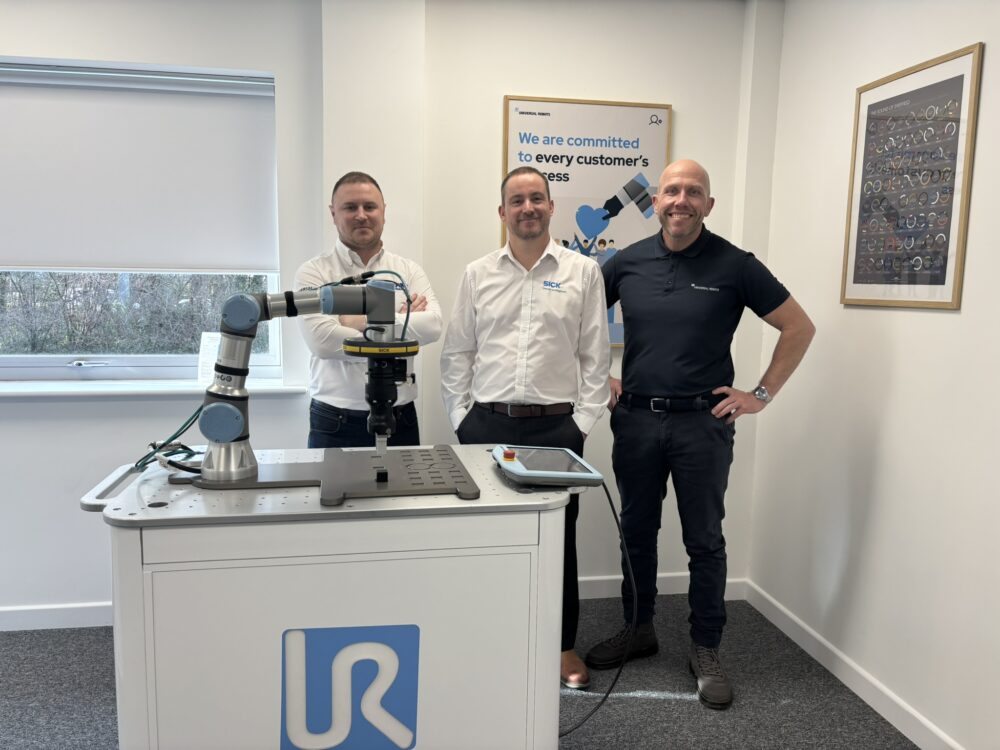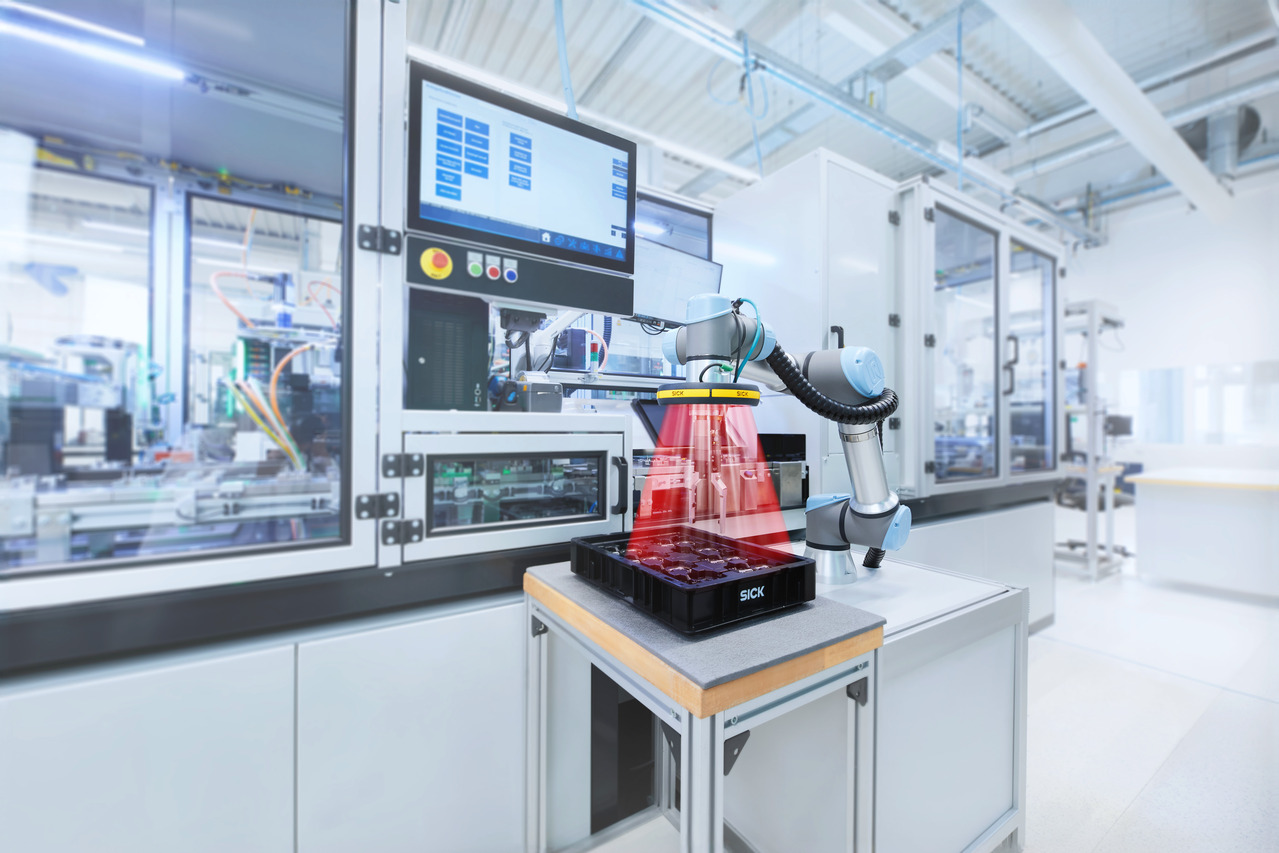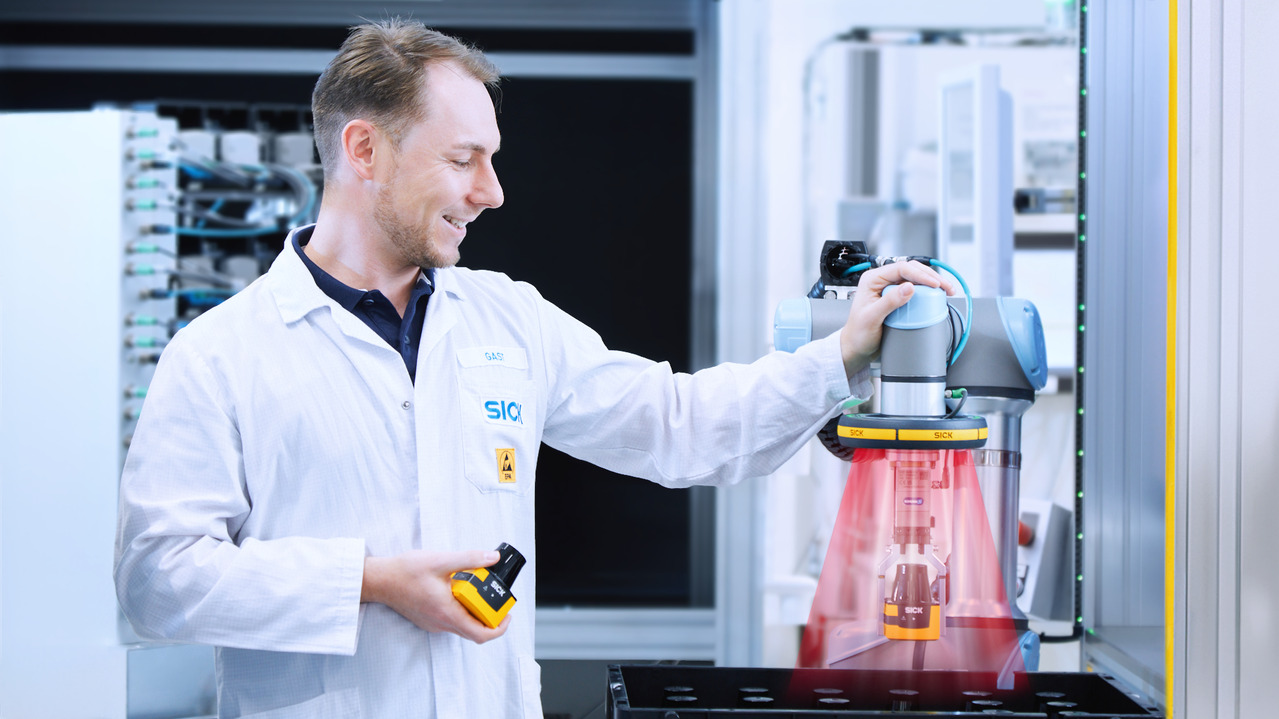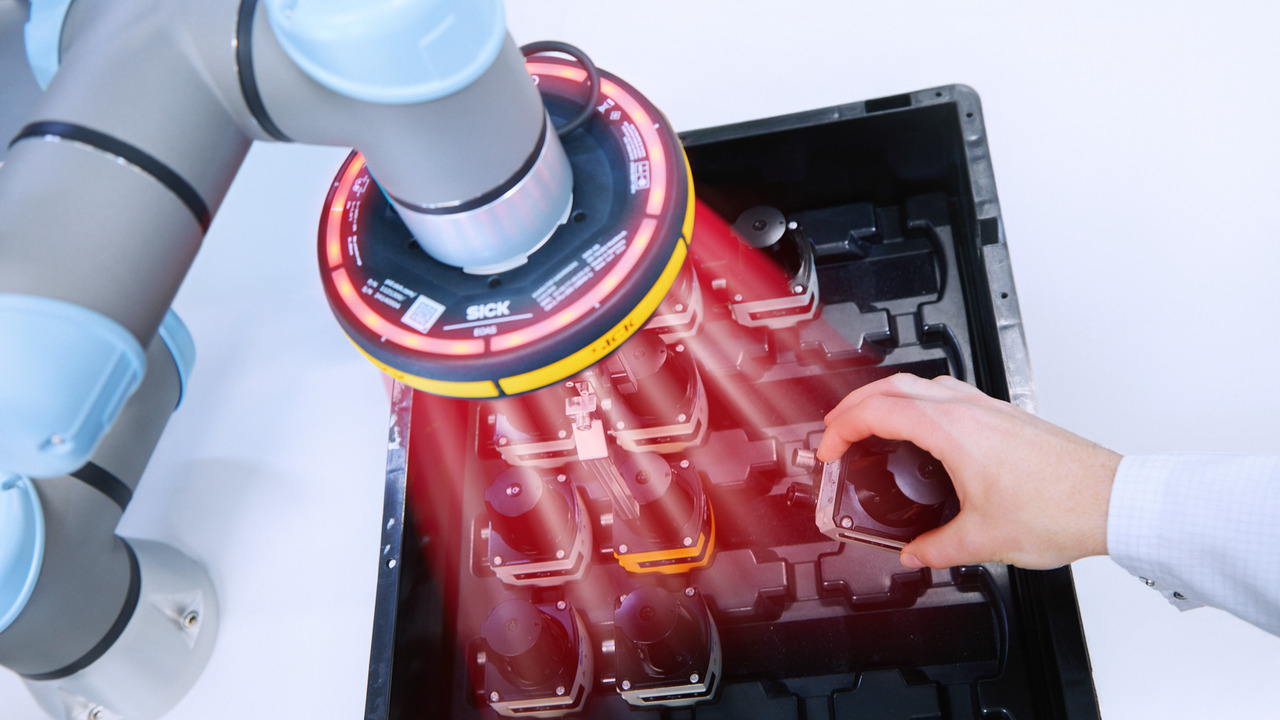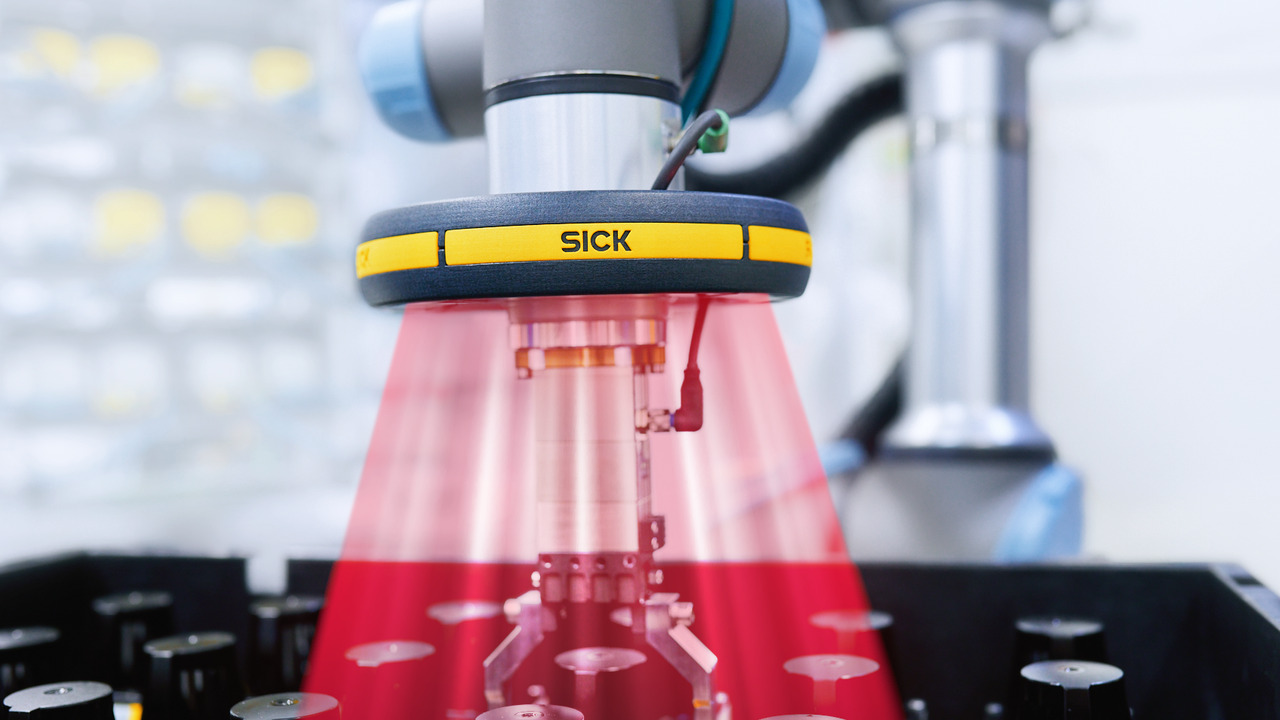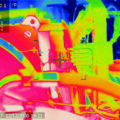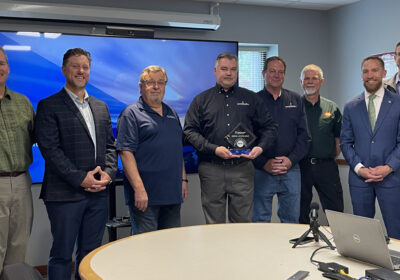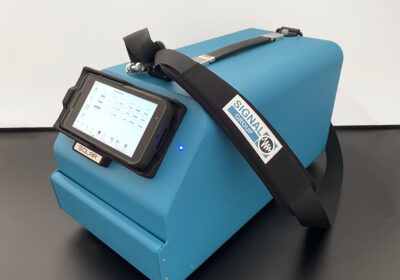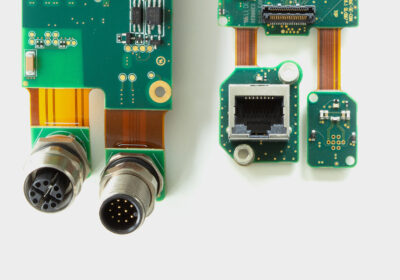Sensor specialist SICK teamed up with cobot expert Universal Robots to unveil the groundbreaking End of Arm Safeguard (EOAS), enabling safe, collision-free and close collaboration between robots and humans.
St. Albans, 20th February 2024 – SICK has brought a new safety solution to the market with its End of Arm Safeguard (EOAS) for collaborative robots (cobots). The first of its kind, the EOAS enables closer collaboration between robots and humans.
SICK has partnered with the world’s largest vendor of cobots, Universal Robots, combining SICK’s decades of experience in sensor technology with Universal Robots’ innovative robotics technology for collision-free, reliable and safe human-robot collaboration. Mounted directly onto its arm, the EOAS moves with the cobot for seamless teamwork.
The world’s first solution for safe, contactless robot collaboration
Breaking down siloes between robots and humans, the EOAS enables added iterative risk reduction, potentially removing the need for additional safety measures. The EOAS is a category 2 (ISO 13849) laser device that creates a protective field around the robot tool at the end of the robot arm. This allows it to move with the arm and operate in smaller, more defined areas, enabling protection of a fixed hazard range of up to 400 mm. When the human disturbs the protective field, a Stop is triggered and the cobot immediately ceases movement.
Time-of-flight technology makes it possible for a robotic arm to react dynamically, with a response time of ≤110 ms, speeding up production and enhancing safety. Human workers have the confidence to operate collaboratively, with the robotic arm stopping once the protective field is breached and recommencing its task once it is restored.
Quick to install, easy to use
The EOAS comes with plug and play set up, meaning it can be installed within 15 minutes. Compatible with robots from Universal Robots, the sensor is automatically recognised as an accessory and easily integrates with existing operations using EOAS URCap software. SICK and Universal Robots have also created a series of tutorials to enable fast and effective integration of the EOAS, and the URCap software provides continuous updates.
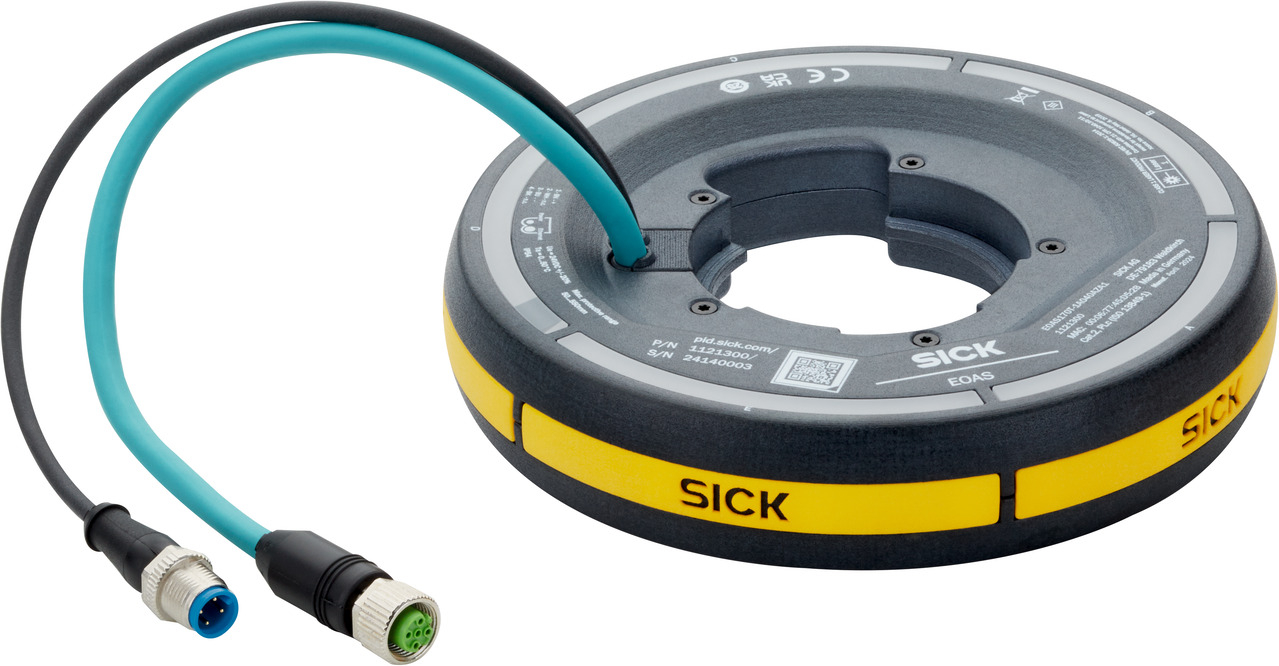
The Safeguard Stop
SICK’s pioneering EOAS provides a Safeguard Stop through an invisible, infrared, protective shell of 40 laser beams that covers a hazard range encompassing the tool and workpiece. This allows for space-free operation, where humans can work in close proximity with the cobot with optimal safety. Mounting the sensor directly onto the arm of the cobot means
unnecessary stops are kept to a minimum, enhancing productivity while maintaining safe operation for workers to easily retrieve and replace workpieces.
EOAS sensors in action: Real-world applications
The range of potential application scenarios for the EOAS is huge and includes pick & place, machine tending, and handling & assembly. The EOAS is suited to most industry sectors where cobots work alongside human operators, including pharmaceuticals, electronics, semiconductors, food & beverage, cosmetics, automotive, packaging, plastics and metals.
Matthew van den Braak, Product Manager – Robotic & Mobile Platforms at SICK UK, says: “The EOAS ensures worker safety by helping to minimise risk in collaborative robot applications. We are immensely proud of the new EOAS, and it is so easy to install and configure. Our partnership with Universal Robots has seen the EOAS jointly developed and robustly tested in the field. As the first device of its kind on the market, the EOAS helps remove physical and psychological barriers in human/robot collaboration across a wide range of applications.
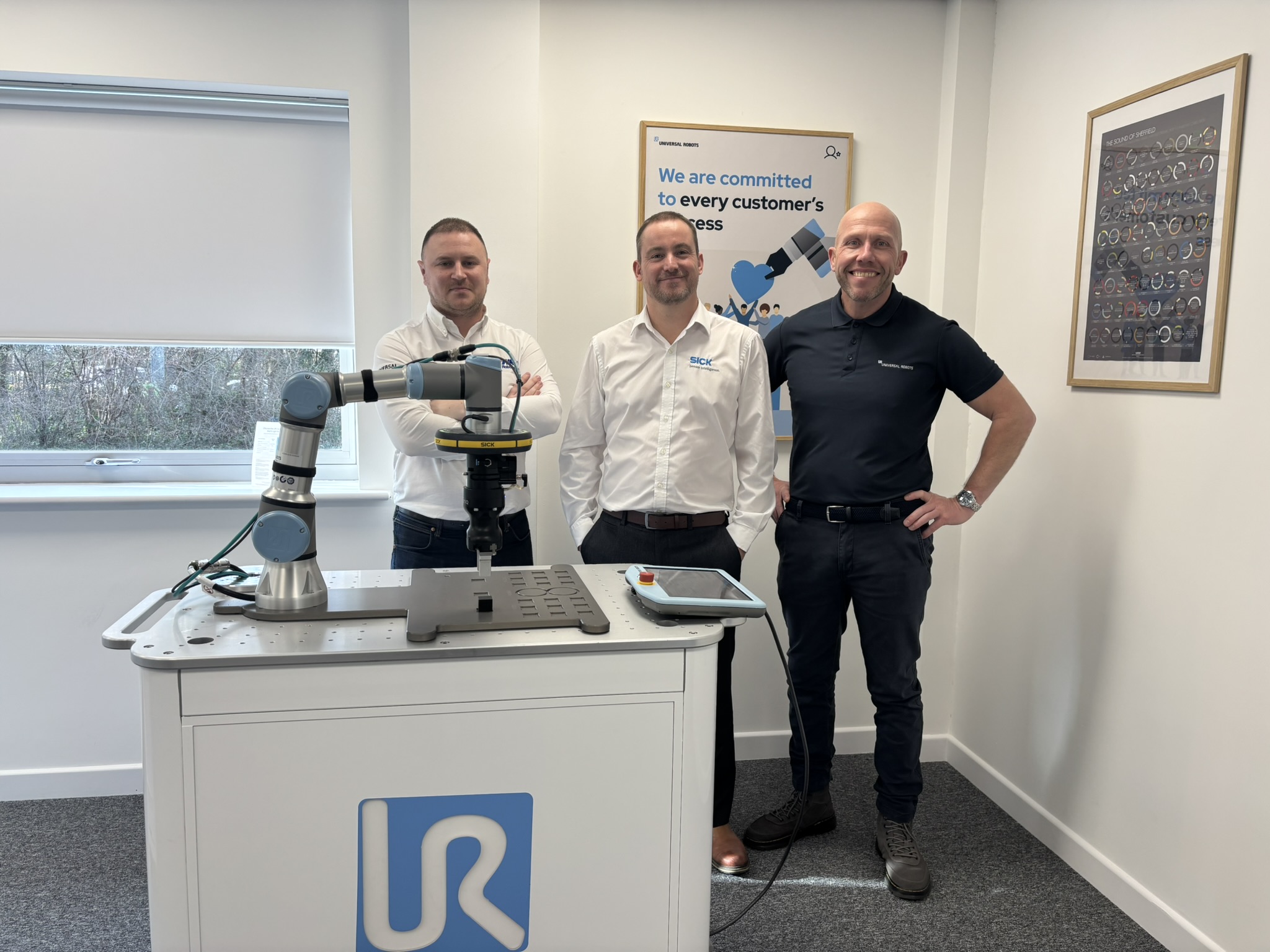
David Lievesley, UK/Ireland Technical Support Engineer at Universal Robots, adds, “One of the great things about the EOAS is it’s fully patented plug and play technology developed in partnership with SICK. It sits inside our safety system, operating as one device. When you alter the parameters on the sensor, it alters it on the robot, enabling full human-robot collaboration. The EOAS is ideal for small environments, adding an extra element of safety to what is on the end of the robot and enabling the tool to work in a fully collaborative way.”

